USTP Library continues to serve amid New Normal
KimRuzzelT.Amper
The University of Science and Technology of Southern Philippines (USTP) –Cagayan de Oro Campus is continuously improving its service to the students despite the challenges of the pandemic.


On November 17-20, 2020 the USTP Library conducted a virtual meeting with the Senior High School and College Freshmen students via Google Meet to discuss its both old and new policies. A Virtual Information USTP Library Assistant (VIULA) has been made available online to assist all the concerns of the students. Basically, this will serve as a guide on how a student can access books or materials in


the library amidst the “new normal.”
Students can now borrow materials from the library through meet up and book ninja, which is an alternative mode of accessing books within the school premises. First, they need to message directly the USTP Library via Facebook page (USTP Library-CDO) or visit their official website at ustp@library.edu.ph. A form will be given to them and they will fill it out in order to complete the borrower’s details. After that, students would only need to wait for the transaction to be completed and a code will be sent to them. The code should be presented to the USTP main gate to claim the borrowed
material on the estimated day of delivery. Thereupon, students will be asked to sign the book card.
On the other hand, the materials and books from the library can still be accessed inside the university if one chooses to contact the library through book ninja, which is by calling the local numbers of the Main Library –134 or Graduate Library – 155. A form will be given and must be filled out by the borrower. Upon filling out, books and materials will be delivered to the building or offices where the borrower is located within the campus and sign the book card once the borrowed material is received.
The USTP library has set up a box at the main gate where students could just drop off the materials they borrowed. Nonetheless, they still need to inform the library through the aforementioned contacts that the materials have been dropped off. Subsequently, VIULA will notify the students once the transaction is made and cleared in their system.
Moreover, the USTP library will post their new normal services and policies, headlines, and current events through subscribed periodicals: Newspapers, magazines and journals on their Facebook page. Also, if students wish to go inside the campus library; social distancing and the wearing of facemask and face shield, are strictly observed in accordance with the safety protocols.
RESOURCEFULNESS. One of the three photos of Kyra Jandayan recognized by CHED during the competition. Photo source: Department of Technology Communication Management-USTP CDO Campus Facebook Page
7
CONTINUOUS SERVICE. A virtual meeting conducted by the USTP Library together with the College Freshmen and Senior High School students. Photo source: USTP-CDO Library Facebook Page, 2020
The Official Student Publication of University of Science and Technology of Southern Philippines – CdO Campus
Confusing. Disappointing. Exhausting. This year has been filled with unwavering cries of distress as inconveniences continue to topple on top of one another. Despite the many challenges we face in these times of uncertainty, it is vital to pay attention to the most plausible key to endurance in life — education.
Recently, the University of Science and Technology of Southern Philippines (USTP) through the Digital Transformation Office (DTO) has made a great endeavor of addressing the challenges of COVID-19 pandemic by launching its first ever University of Science and Technology e-learning Portal (USTeP) for the different online systems that cater to the need of both its faculty and students. Frankly speaking, the new sound bite in today's educational climate is the online education or the virtual classroom: as teachers, students, parents, and responding to government regulations on school operations; come to terms with new teaching methods and applications for technology. As both the teachers and the students learn, it is not easy, however, both parties are eager to accept what could become a new norm of education. Significantly, there are still questions that need to be answered and little time is given for the study to be completed. Now, as USTeP becomes more central to university teaching, it will be important to rigorously assess the impact of this change. More importantly, is the essence of USTeP highly taken into consideration by the constituents of the University? Is everyone in the institution accustomed with the ways around and about the USTeP platform?
The underlying effects of the pandemic has certainly influenced our perception on current affairs which in return, affect our way of survival. While education serves as a basic right for every human being, the institutions of higher education face a new ordeal on preparing college students into a productive workforce of society. However, not all students share the same concepts as some would rather pursue a more liberated path rather than a carved future. Whether that is true or not, education is still a necessary attribute which pertains to addressing obstacles in the coming days with a knowledgeable approach. Universities
and its constituents work hand-in-hand to face the flexible mode of learning with an innovative outlook. In a crucial point, are these innovative approaches effective and convenient enough? The answer is not as quite as it seems to be expected.
The USTP institution decided to take the synchronous and asynchronous approaches of learning in the Academic Year 2020-2021 with the endeavor to have learning in a more inclusive demeanour. However, the understanding of these approaches is somehow challenged with the fundamental need of internet connection for academic-related tasks. As per observation, the USTeP as an e-learning platform was met with unexpected faultiness during its launch back in August 2020. The condition of malfunction was immediately addressed as systems were brought back up and the occurrence never took place again. Although, the concerns of students continue to persist despite the immediate solution to the issue related with the launch, the unavailability of a reliable internet connection becomes a constant struggle in the daily lives of students as the USTeP site is a platform that needs access with internet connection. Not to mention, several shortcomings have also been met by instructors as some would have delays in uploading quizzes or exams due to slow internet speed.
There are also courses which require the execution of laboratory exercises and in this viewpoint, the effectiveness of online learning is controversial. On account of its fresh and novel initiation, the students face trouble with navigating through the many tabs and features present within the platform. The educational site features an elaborate design which may turn out hard to perceive at first glance. As a consequence of these rudimentary defects, the essence of USTeP as an educational platform is quite dubious as some instructors would resort to other platforms with a more direct and manageable approach. The initiative to formulate this kind of solution is commendable, but to think that the system is way more complex as students and even instructors’ resort to a more convenient mode of learning, the essence of its own existence is quite unclear.


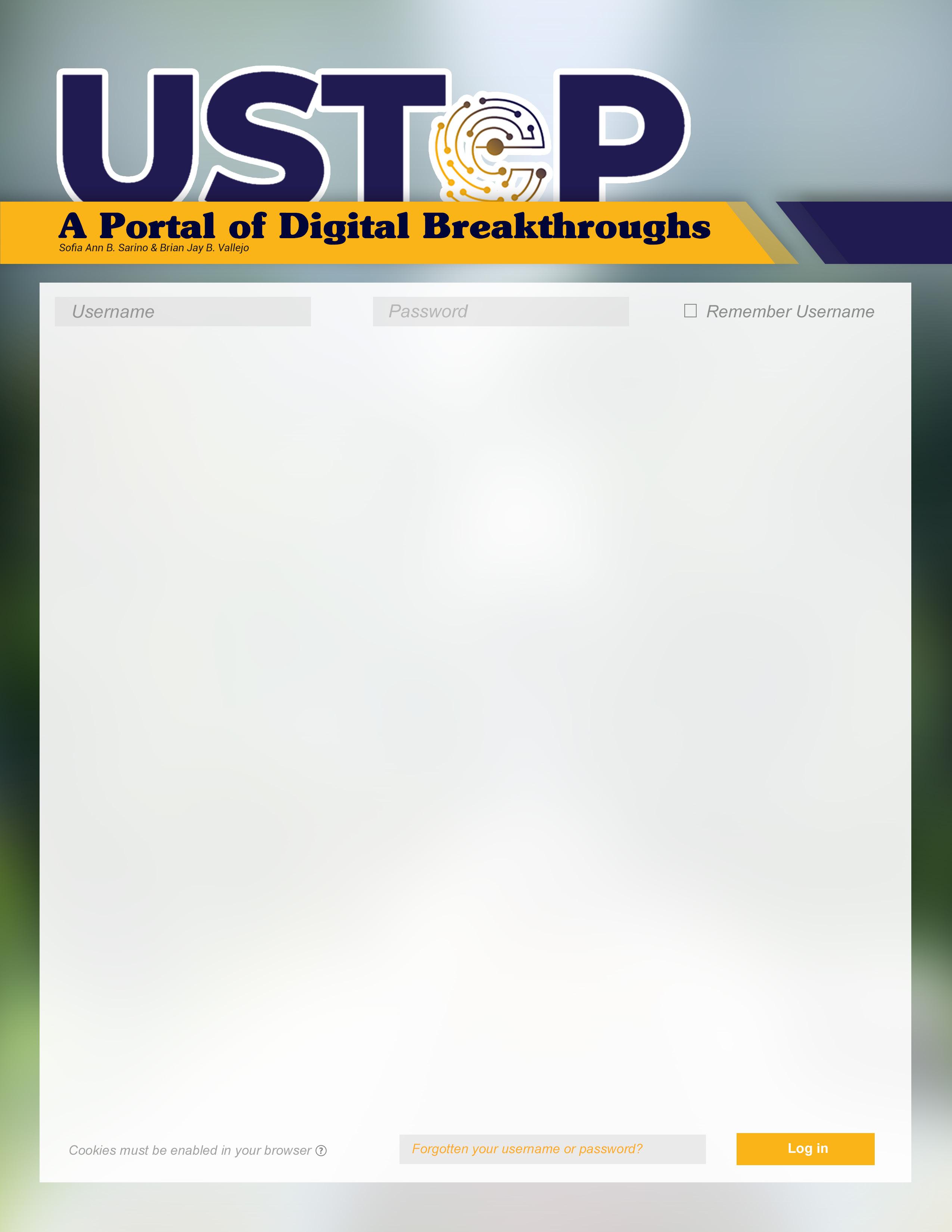
A conducive approach to an alternative mode of learning is most essential amidst the new normal. Every individual is made unique, and the same applies with their type of learning. The means to approach these surmounting variety of needs is another difficulty which deserves an essential response. With all these concepts considered, a simple and comprehensive design would be ideal for an educational platform. The accessibility of the platform should also be convenient for those who have little to no means of getting themselves online. In fact, the Philippines ranked 121st out of 139 surveyed nations of the Ookla's Speedtest Global Index assessment last April 2020. Furthermore, an interactive mode of learning is recommended though its frequency is not a necessity. Teachers and students should associate with one another as much as they could in order to hear out concerns and opinions from both sides. Once these critical necessities are met, the solution to counteract educational concerns would persevere as a challenging mission with attainable results that incorporates vigor and success. ***
Challenges are inevitable in our daily lives. Nevertheless, these persisting difficulties can be given remedies to benefit both parties. As the year 2020 ends, we have been lost in a trance of unwavering problems which require utmost empathy towards one another. In a collaborative effort, the search for the vaccine also persists with an attempt to release oneself from the suffocating chains of the COVID-19 virus. In this aspect, the USTP community does not seem to falter. It is obvious to the eyes of many that the shortcomings, pertaining to the USTeP as an e-learning platform, have been met by the USTP institution with a durable sense of resolve. As the ongoing conduct of online classes continue, the anticipation for much awaited accountability and improvised approach continues as well. Thus, humans are bound to face the consequences of their actions in every concerned aspect; be it education, socio-political matters, health and finances, and so on. Inevitably, one can only be prepared enough to meet the future with a capable mind and sensible soul amid adverse uncertainties.
CAMPUS FEATURE 8
Layout by Mark Jerome A. Orejenes
On September 18, 2020 the Academic Year 2019-2020 has come to an end in the eyes of University of Science and Technology of Southern Philippines (USTP) graduating students. Despite these challenging times, the USTP gave recognition to 1,828 candidates for graduation through a Virtual Commencement Exercise with the theme: “Fostering National Development through InnovationandEntrepreneurship”led by USTP System President, Dr. Ambrosio B. Cultura II.

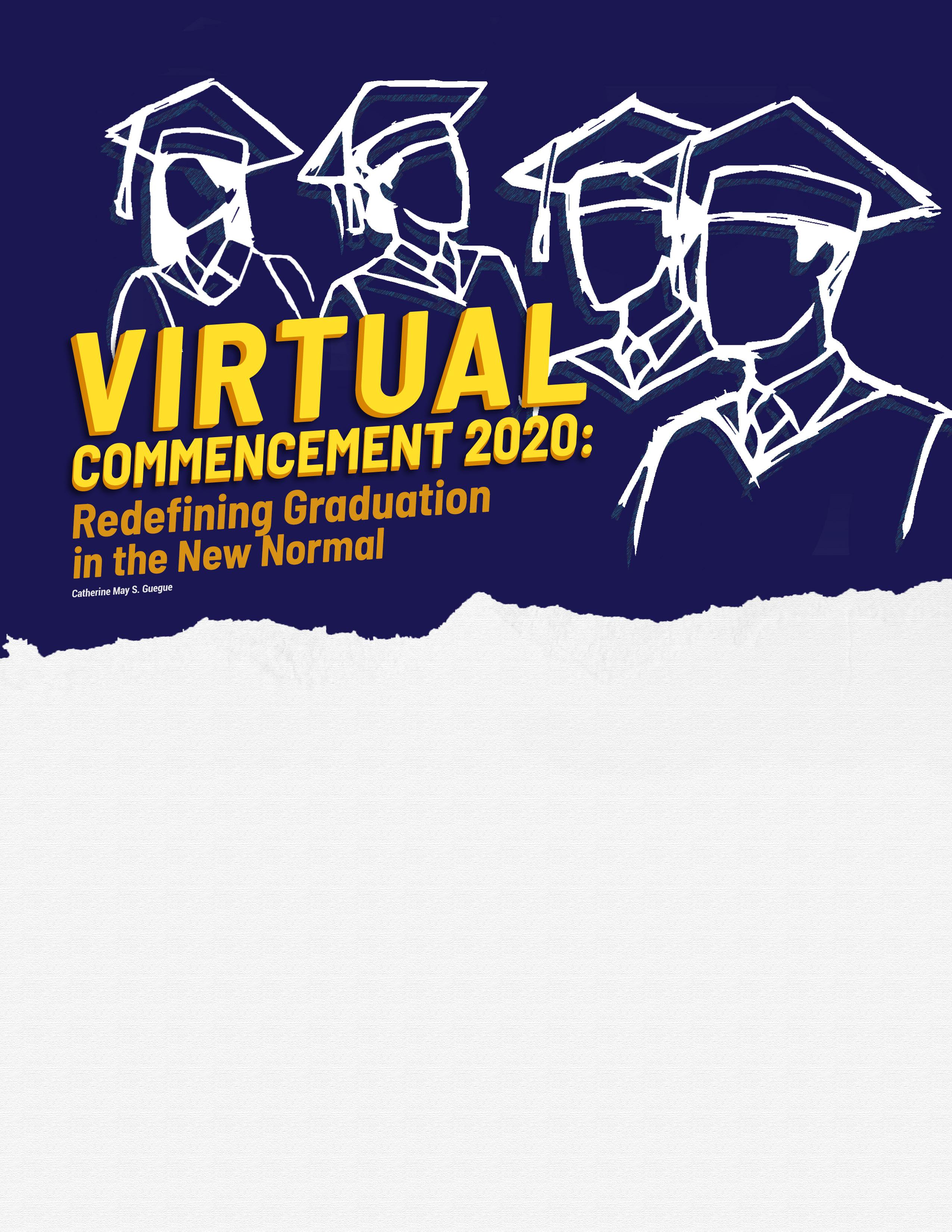
The virtual event was attended by the two major campuses and satellite campuses of USTP namely; USTP Cagayan de Oro City, Claveria, Jasaan, Oroquieta, and Panaon. The members of the Board of Regents (BOR) also graced the event with their profound presence namely: Mr. Alfonso P. Alamban, Regional Director of the Department of Science and Technology X (DOST-X), Ms. Mylah Faye Aurora B. Cariño, Regional Director of the National Economic and Development Authority X (NEDA-X), Ms. Fritzie B. Salado, President of USTP Federation of Faculty Association (FFA), and Mr. Jason Jay C. Dalman, President of USTP Alumni Association (AA).
The number of graduates from USTP CDO totalled to 1,195 candidates, USTP Claveria has 407, USTP Jasaan has 22, USTP Oroquieta has 111 and USTP Panaon has 93. All of the candidates has been recognized as fully pledged graduates via online graduation.
In addition, Cabinet Secretary Karlo Alexei B. Nograles was also present in the virtual closing exercise; he served as the commencement speaker and the main guest of the ceremony. In his inspirational message, he said “Although we are facing a pandemic, we mustrecognizeandcelebrateyourachievement made possible by your hard work. We must move forward, we must pursue our plans and dream while adapting to the new normal, we must continue to live.”
The virtual graduation then ended with the Graduates’ Pledge, which was led by Dr. Angelo Mark P. Walag, a faculty member of the College of Science and Technology Education. Followed by the alumni oath led by Mr. Jason Jay C. Dalman of the USTP Alumni Federation and the singing of the University Hymn.
At last, the struggle of being a student was finally paid off in a virtual yet memorable experience. Despite the disappointments, stress, and pressure that they experienced, the USTP graduates of batch 2020 still managed to persevere through any obstacles they encountered in their academic journey.
Truly, the virtual event left a transcript in student’s heart and mind for the true essence of graduation is not just about the celebration of academic milestones but also the genuine value of every success. After all the hardships, the time to harvest the fruits of labours have come to all USTP graduates and they deserve a sincere and heartfelt conveyance of cheers and recognition. Furthermore, the event proved that no pandemic can ever outshine the hard work and dedication of the graduates. The journey may not be smooth as all students wanted it to be, but now they have progressed to a higher level of trials – but no need to worry, as the USTP graduates are well-equipped with the necessary skills and knowledge to counter the hardships of this world.
CAMPUS FEATURE 9 The Official Student Publication of University of
and Technology of
Philippines – CdO Campus
Science
Southern
Layout by Gerson John P. Salvacion
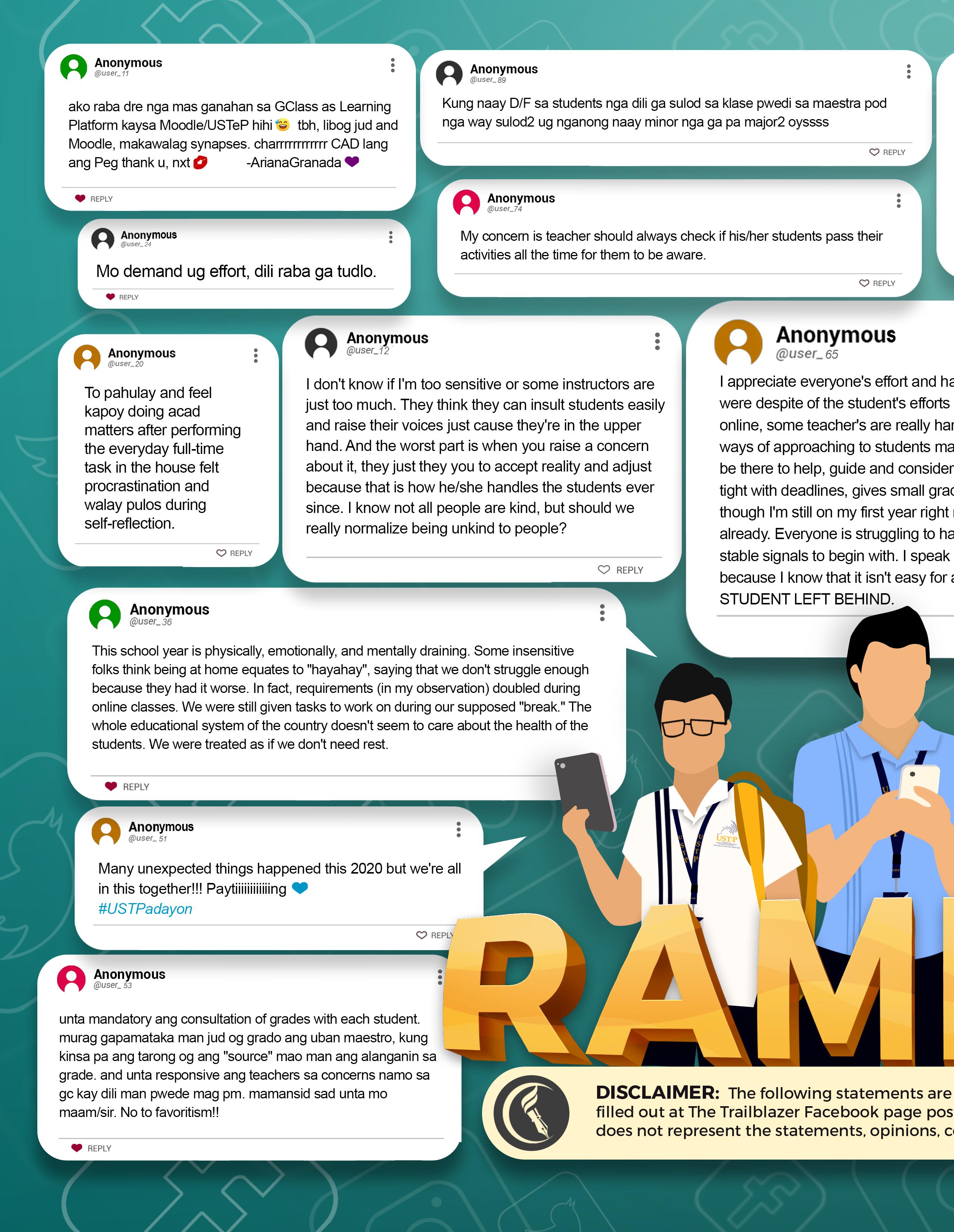

10
Layout by Mark Jerome A. Orejenes
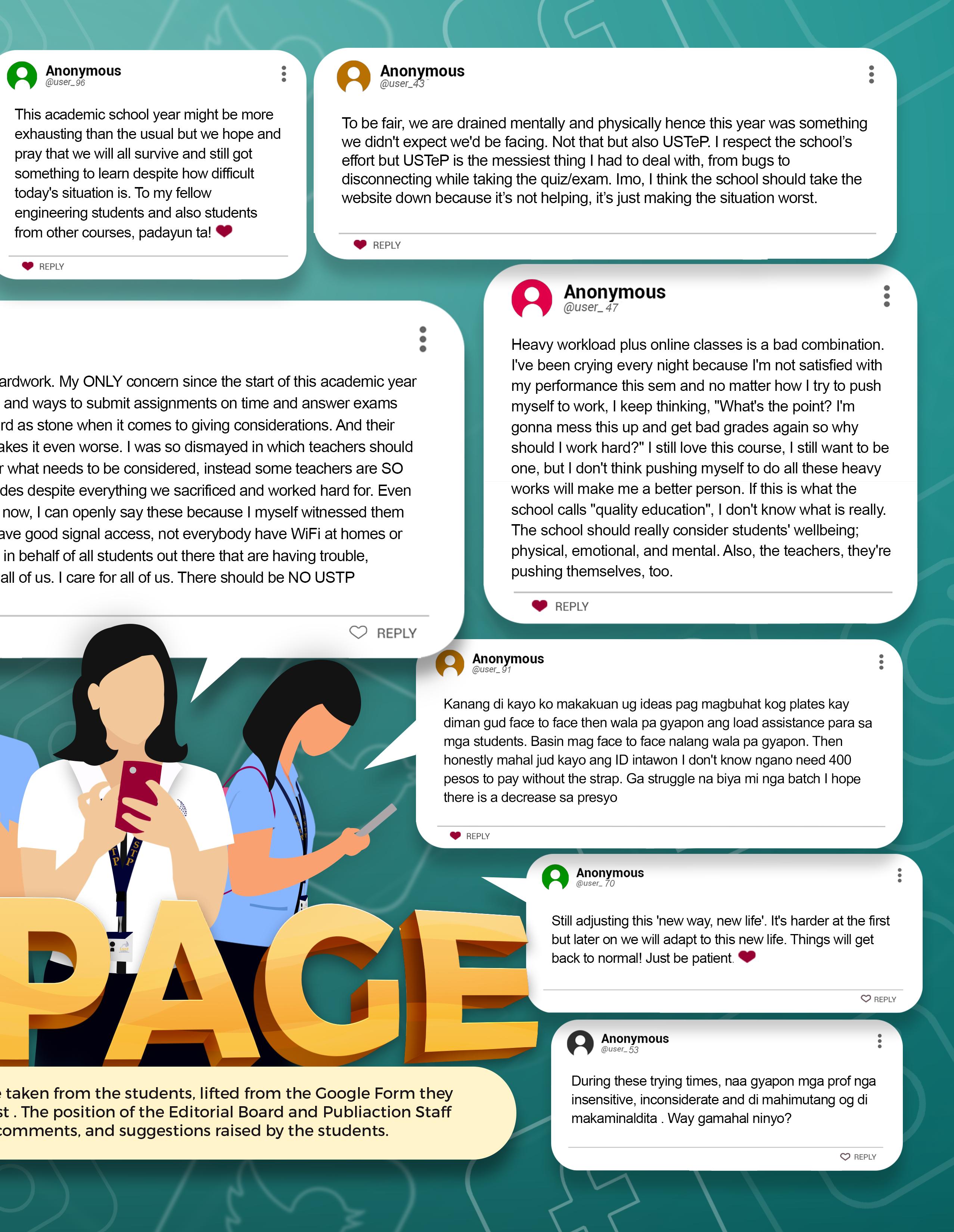
11
The Official Student Publication of University of Science and Technology of Southern Philippines – CdO Campus
With the dolomite sand, it will be one of the most picturesque sceneries in the whole world, perhaps?
Manila Bay unexpectedly received a sudden facelift after years of recognition for its dirty waters as the government chose to take a huge gamble by overlaying mounds of artificial white sand on a section of the naturally gray shoreline of the bay. Political interests and contradictory enforcement of otherwise wellmeaning laws and regulations have clashed with science-based environmental policies, leading to debacles in a small portion of Manila Bay. Moreover, there has been criticism of the use of artificial sand, with conservation groups saying that the facelift focuses only on aesthetics and has nothing to do with recovery. Despite blatant opposition from environmental campaigners, the current administration has filled a 500-meter stretch of coastline beside the U.S. embassy in Manila with sand made from tons of crushed Central Philippine dolomite boulders.
Under Pressure Long-standing environmental issues, such as deforestation and resource misuse have already affected Manila Bay and the sudden facelift just added fuel to the fire. There is no denying that some organizations fought hard to at least stop the project for so many reasons. According to a 2012 safety data study by Texas distributor and builder Lehigh Hanson Inc., “thereisavarietyofhazardsdolomitecanpose to handlers.” In a report released by Rappler on September 8, 2020, the effect of dolomite has been discussed. “Dolomite contains varying amountsofcrystallinesilicathatwhenbreathed in can cause lung damage or even cancer. The substancecanalsocauseskinandeyeirritation.
Furthermore,dolomiteisalsoknownascalcium magnesium carbonate, a non-metallic stone used in the manufacturing of bricks, mortar, cement, concrete, plastics, paving materials, and other building materials.” According to geologist Hobart King, “the rock originates in humid, shallow, marine environments and is believedtoformwhenlimestoneismodifiedby groundwater rich in magnesium.” It has a poor solubility, which makes it resistant to rain and soil acidity.
In addition, the Department of Health has also attested to the health effects of dolomite, in particular, the adverse reactions in humans when inhaled. Health Undersecretary Maria Rosario Vergeire said that, “dolomite can cause


stomachpainand resultindiarrheawheningested.”
However, the Department of Environment and Natural Resources (DENR) claimed in an interview by Philstar that the crushed dolomite will not disrupt the bay’s ecosystem. Well, this assertion did not encourage people. Some groups even staged a protest action against the said plan. DENR Undersecretary Benny Antiporda said in a PhilStar report, “Kami sa DENR pinag-aralan natin ‘yan. In the first place ‘yung mga ginamit d’yan, especially ‘yung sand, ‘yung dolomite boulders na ‘yan it contains calcium carbonate andifyouwilllooksacorals,calciumcarbonate din.Soitwillnotdisruptthecoastalecosystem.”
On the other hand, the environmental group Oceana Philippines cautioned since the sand does not occur naturally in the bay. Both the natural ecosystem of Manila Bay and the source of the synthetic sand may be destroyed by the government posing harm to the marine environment and humans, as it contains heavy metals such as aluminum, lead, and mercury that could contribute to the pollution and acidity of Manila Bay.
The Sunken 389 Million and Misplaced Priorities
The Department proposed to cover some 500 meters of Manila Bay shoreline with crushed dolomite from Cebu with a budget of P389 million from President Rodrigo Duterte’s contingency fund. During the House deliberations on the proposed 2021 budget for DENR, Undersecretary Jonas Leones of DENR Environment and International Environment explained that P28 million of the P389 million was spent on crushed dolomites alone. As for the remaining funds, these will be spent on the building of other support systems, including “geo-interventions” reportedly intended to stop washing away the crushed dolomite.

Meanwhile, the beautification project is part of the DENR Manila Bay Restoration Program launched in January 2019 in an attempt to restore the former glory of the bay after decades of pollution, in line with a 2008 ruling by the Supreme Court ordering 13 agencies to clean up Manila Bay. At present, as it experienced issues with the private contractor and supplier of the crushed mineral, the DENR has stopped placing crushed dolomite on the bay shoreline. After the suspected destruction of corals in the water near the mine site, the two mining firms; Dolomite Mining Corp. (DMC) and Philippine Mining Service Corp. (PMSC), were suspended.
Recent typhoons and heavy rains that hit Manila have shown how wrong this project is for DENR to embark on. The “sand”of the white dolomite was washed out repeatedly and DENR needed to “restore” the region every time. However, the DENR has another version, claiming that the dolomite is not being washed out. The black sand was instead washed in, resulting in the coverage of the white artificial sand. Researchers have said that the material that should be used when nourishing a beach is one close to what is already there. The shoreline of Manila Bay is naturally gray, and its sand is certainly not dolomite. Also, one foreign expert said that dolomite is used to create roads, and not one of the artificial beaches in the world is made of dolomite. In addition to the harm to the environment, scientists from the University of the Philippines (UP) raised concerns about the high cost of the project in a statement, as this will require the sand to be constantly replaced with crushed dolomite. The addition of dolomites will not serve to anchor the loss of beach sand or serve as a substitute for eroded sediments.
***
Significantly, the said fund could have been better allocated to the national government’s response to the worsening health crisis instead or it could also be utilized for the purchase of gadgets, computers, and radios for distance and blended learning of students. Similarly, in a separate statement released by CNN Philippines, the fisher folk group known as PambansangLakasngKilusangMamalakaya ng Pilipinas (Pamalakaya) stressed that instead of the white beach scheme, the government should have covered the 13,000 hectares of Manila Bay’s coast with mangroves. More importantly, mangroves serve many important purposes to the marine environment and coastal communities. Its amenities include community defense against strong waves, storm surges, flood regulation, sediment trapping, marine wildlife habitat, and nurseries. Wrong priorities or just for publicity? Either way, in times like these, priorities should be put into place beforehand. We need genuine leaders who will lead us in a non-linear way, who will show us tangible solutions and visible actions.
Sources: https://www.google.com/amp/s/amp.dw.com/en/philippinesartificial-white-sandy-beach-could-spell-eco-disaster/a-55397340 https://www.google.com/amp/s/newsinfo.inquirer.net/1354003/thecontroversy-that-refuses-to-die-manila-bay-dolomite-sand/amp https://www.denr.gov.ph/index.php/news-events/press-releases/1904denr-clarifies-news-reports-on-status-of-dolomite-sand-in-manila-bay
NATIONAL FEATURE 12
Layout by Ryan Rashed O. Dongiapon
This year has been a huge stroke of challenges for Filipinos as calamities and socio-economic concerns blocked the rails to a prosperous year. Citizens of all classes, who joined with the stems of the government, have made tremendous efforts to combat and strike the unsolicited threats of the virus – COVID-19. The relationship between the citizens and its government would imply a symbolic-state along with the sail. Seemingly, it is a challenge to maintain bonds between the “People and the Power”. However, what if a sector from the government would turn its head to its people and take its lenses towards the state’s “pocketed chest of money”? Amidst these trying times, people are silently squeaking behind empty stomachs as well as struggling to catch a breath. Could this idea be a boon or bane?
A testimonial between heaven and hell could be witnessed in a published video of Rappler (August, 2020) entitled “Resigned officer says PhilHealth chief ordered him to ‘massage’ overpriced testing kits issue.”

The resigned Philippine Health Insurance Corp. official and anti-fraud legal officer, Atty. Thorrson Montes Keith, was tagged a hero for disclosing the secrets within. The Executive Committees of PhilHealth was also tagged as “Mafia” by Kieth for involving syndicate-like anomalies in the corporation. Moreover, Keith hammered PhilHealth Officials with its claims against them as he fumed the irregularities happening inside the PhilHealth system. He also ventilated it as the “Criminal of
theYear”— the whole of Philippine Health Insurance Corporation.

In an online article published by the Inquirer (2020), the “Mafias” have reported to embezzle an astonishing amount of P15 billion. This move comes from different agenda, a root for any causes—like a tree of no life wherein veins were scattered to different corners of the well-respected company. Keith nailed it to be the mouthwatering overpriced I.T. projects, cash advancement to hospitals, and the Interim Reimbursement Mechanism (IRM). All of these are denominators pertaining to the consumption of every Filipino’s hand into the pockets of the said Officials. Nonetheless, Kieth seemed to be the Corporation’s uninvited “kryptonite” that awakes their lucid dreams beside their grumpy hands, prepared to capture an image as to how “full” their pockets are.
As a hero of this chapter, Keith is likely to have a softened-heart towards his countrymen. He never wants to have his fellowmen to be fooled and be easily blinded by the Corps’ immeasurable “loyalty”. Regardless of the trails, he had jumped to reach the testimonial-mic, at which point he further dodged through the hypnotizing witchery-words from the ex-PhilHealth Chief Ricardo Morales. As he enchanted words to “massage” the PhilHealth’s case among the legal authorities, Kieth remained unvarnished with truth to his tongue. He further relayed hoarded data as shreds of evidence to make brand on his allegations towards the Corporation.
Although, the PhilHealth Officials remained stiff and untethered to stoop down Kieth’s capabilities towards their odd veins. Justice is still served in this case to have clear insights among the lenses of the citizens with regard to this public concern.
***
In the guise of the case under discussion tagged as the “CrimeoftheYear”, it was imperative for a hero not to unfold the PhilHealth Corporation’s culture of Corruption for “decades” now. Kieth was able to give justice and make a change to the system’s irregularities wherever the clouds of trials would lift them. This case should and must be filtered by legal officers to give justice to Filipinos exponential hard-earned taxes. Since PhilHealth was named to have “Corrupt Culture” – then this should ideally be canceled. Trim down the practice of a dynasty-like system in choosing a seat of Officials with ill-fitting credentials, grotesque background, and illmannered objectives that would tamper the trust of the Citizens. It is quite evident that this sector needs to be beneficial, especially in this crisis where Public Health is an inch near deathbed and public funds are not secretly vacuumed. Therefore, “Public funds is a Public Trust”
Sources: https://www.youtube.com/watch?v=IxwtZsW8VRE https://newsinfo.inquirer.net/1316435/philhealth-mafiapocketed-p15-b-worth-of-funds-says-ex-anti-fraud-exec https://www.onenews.ph/philhealth-officials-face-p15billion-fraud-other-allegations-funds-seen-to-run-outby-2022
NATIONAL FEATURE 13
The Official Student Publication of University of Science and Technology of Southern Philippines – CdO Campus
Layout by Mark Jerome A. Orejenes
Layout by Djan Kyle M. Muyco & Mark Jerome A. Orejenes
The reality of college life can be pretty discrete from the images portrayed in movies and television. Instead of waking up late with prepared breakfast anytime soon, many colleges and universities are full of students who struggle with schedules of not just classes and activities, but with the intimidating pressure of real jobs; which is indeed a sickening fight to survive academically, especially in today’s “new normal.”
The situation of education accessibility has been afflicting the Philippines for the longest time now. Most families have to struggle with both blood and sweat to satisfy the surging demand of sending their children to college and have them finish it. With the Philippines as a developing country, this is often not a rare sight to start with. Being a working student may be a desperate response to the current hunger for attainable education, but this is how it works for others. A majority of young Filipinos from the middleclass down to those on personal income have once struggled to balance employment and their academic responsibilities. All these, to support themselves, their studies, and in most cases, they work to feed their starving families.
Work versus Study: The Escalating Struggle
The pandemic has ushered necessary changes to both institutions and workplaces, pressuring employed individuals to stand at their outermost limits. Furthermore, the pandemic has triggered a recession, and some experts fear that working-age students doing part-time jobs might be forced to drop out of work if things worsen. Globally, over 1 out of 6 young people have stopped working since the onset of the crisis and approximately shows that at least 687,000 up to 1.019 million Filipino youths may be rendered jobless by the exacerbating pandemic (International Labor Organization Monitor: COVID-19 and the world of work. Fourth edition, 2020, p. 2).
Young part-timers between ages 15 to 24 are especially vulnerable as the COVID-19 crisis rattles businesses. The youth deemed to be the first option to lose their jobs given the relative lack of experience. Those who are not yet working are affected too, as students struggle to complete their studies under distance learning and find it hard to do transitions as face-to-face learning has also been halted.
“The decline in youth employment will be most likely affected by the process, in which young workers who were hired more recently and with less job protection are likely to lose work at a faster rate than adults,” a survey on tackling the COVID-19 youth employment crisis in Asia and the Pacific (2020) asserted.

Moreover, Aedo, Vatsal, & Sabarwal (2020) showed that less than one percent of lowincome students have access to the internet for distance learning. Despite more than 60 percent of national distance learning initiatives relying on online platforms, many are unable to catch up with the new imposed learning style leading to the rising number of dropouts this year.
It is a shred of sheer evidence that the most deprived and marginalized students are being hit the hardest by the pandemic, aggravating existing inequalities and pushing the most vulnerable students even further behind.
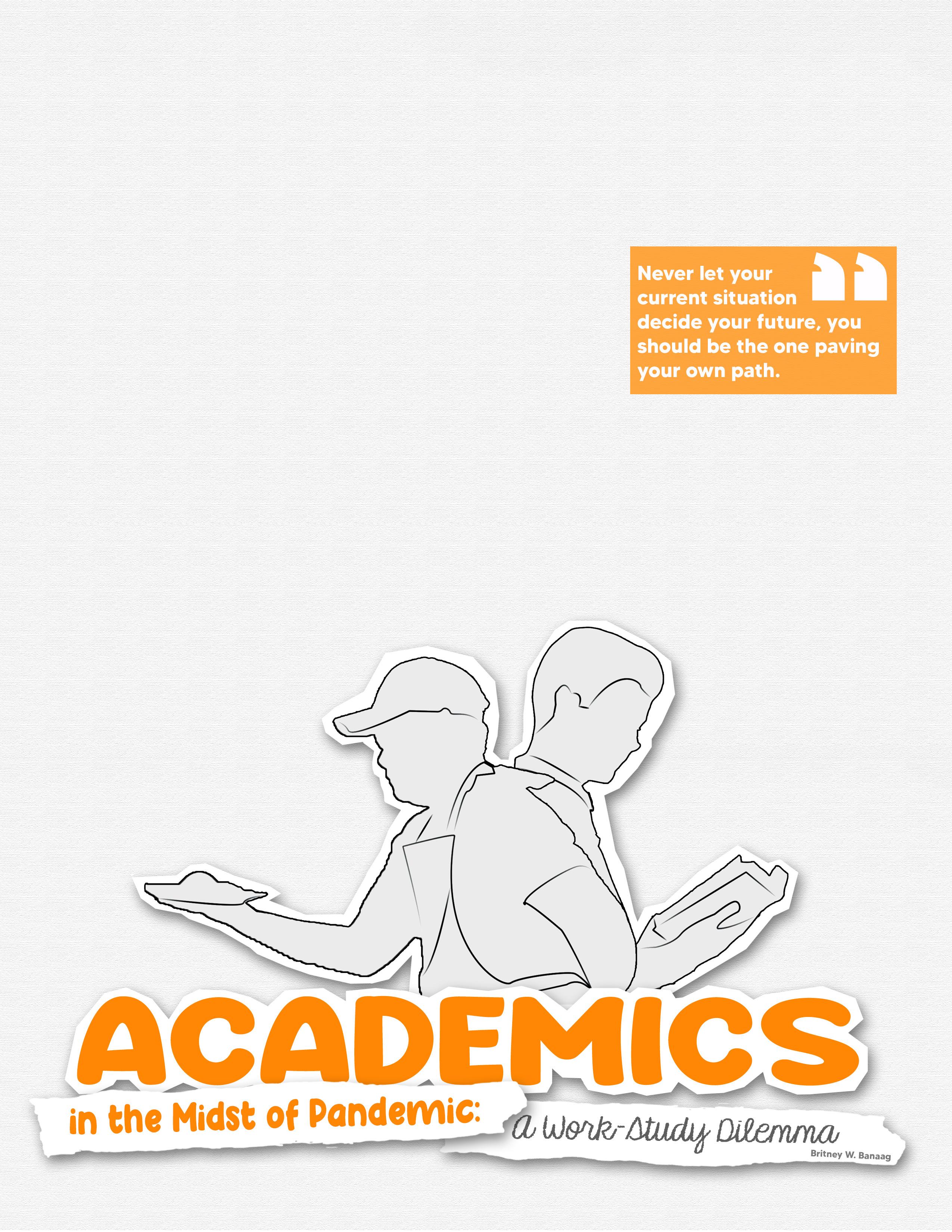
Paving Hope amid Scarcity

Besides health and the economy, education is one of the most hard-hit sectors due to the pandemic. As the world reopens and navigates its way to the new normal, students are caught between unwanted shifting systems and unusual learning environments. Nevertheless, this does not stop Nhel Perez, a 20-year-old USTP working student, from pursuing his studies amidst the struggles brought by the pandemic.
Devastated after being abandoned alone by his single mother, Nhel became an orphan at a very young age. As a current secondyear college student who supports himself alone,
Nhel likely seems to experience many hardships in life. Learning the basic skills to survive has made him more mature than his actual age. Before the current crisis, he has already done part-time work in a few internet cafés as an assistant watcher and a service crew in a fast-food restaurant; he often works at night and studies during the day. In the course of these challenging times, he lost both of his jobs due to massive business stirring, which has led to the closure of different subsiding companies, leaving him jobless for four months.
Now that classes have recommenced despite the battle cry of the students for academic freeze, he has to triple the effort on earning enough for the necessary support required on his daily allowances for food and prepaid consumption as he determinately decided not to stop this year, eagerly wanting not to dissipate any chances that knock by. Working as a part-time assistant driver on delivering cargo containers and food servers on his Aunt’s small eatery, he was able to buy his first android phone for his online classes.
“Never let your current situation decide your future, you should be the one paving your own path,” he further stated with an ultimate sense of resolve and fortitude.
***
Grappling with flexible learning in the new normal, Nhel took it as one of the most significant challenges and a motivation to continue striving hard. This was not the life Nhel has chosen for himself, but he deems to have no other choice. Thus, he shares no regret experiencing the bittersweet taste of life – because the real world rests on perseverance.
FEATURE 14
Despite all these, students and teachers alike continued to welcome the academic year 2020-2021. From here on, we see the determination, resiliency, and efforts of each Filipino just to adhere with what the Philippine Higher Education Institutions (HEIs) have been strongly urging: Education must go on.
The entire world is continuously battling against a major health crisis — the COVID 19. This global pandemic has left everyone with no choice but to continue attaining education through online classes and flexible learning programs. The government’s unyielding pledge to never put education on hold has really pushed everyone to make use of all available resources. However, if education and its urgent fulfillment for the betterment of the country through well-equipped students is really the focus of the academic year 20202021, then we must realize that students with their families situated in remote areas exist too. And now in the middle of a pandemic, it is all the more necessary for education sectors in the Philippines to give these students the utmost attention.
Inclusive education means embracing the philosophy of accepting all

children regardless of race, size, shape, color, ability or disability with support from school staff, students, parents and the community. Meanwhile, to live in a hinterland means to be in the back of beyond, to have lesser access to the most convenient parts of a city or town. These people situated in the less progressive parts of a place live a rather less advanced life, and they are barely reached by all means of technological, economical, and social developments due to their geographic location. Back in the days of normal face-to-face classes, students living in hinterland struggled over their means of transportation; however, they are now faced with another set of heavy problems: How do they catch up with everyone in the online classes? Or even just get updates from teachers and the schools if living in the hinterlands means scarce electricity and internet connection? How will they ever go with the flow of changes in today’s world, when they have always been unable to surf with the waves of modernity long before?
On top of all, this pandemic has already left everyone struggling even in just acquiring the basic necessities in life— such as jobs, foods, and clothing. Being faced with the reality that parents will have to exert more blood, sweat, and tears, and even possibly sacrifice their health just for their children to attain education, adds up to the increasing problems that these vulnerable Filipino families face on a daily basis.
News from national television and all other social media platforms will show you a great number of youth groups, students, and even teachers, calling for “academic freeze.” This demand came from those who live in the center of civilization, comprising even not just those of the lower class, but as well as those in
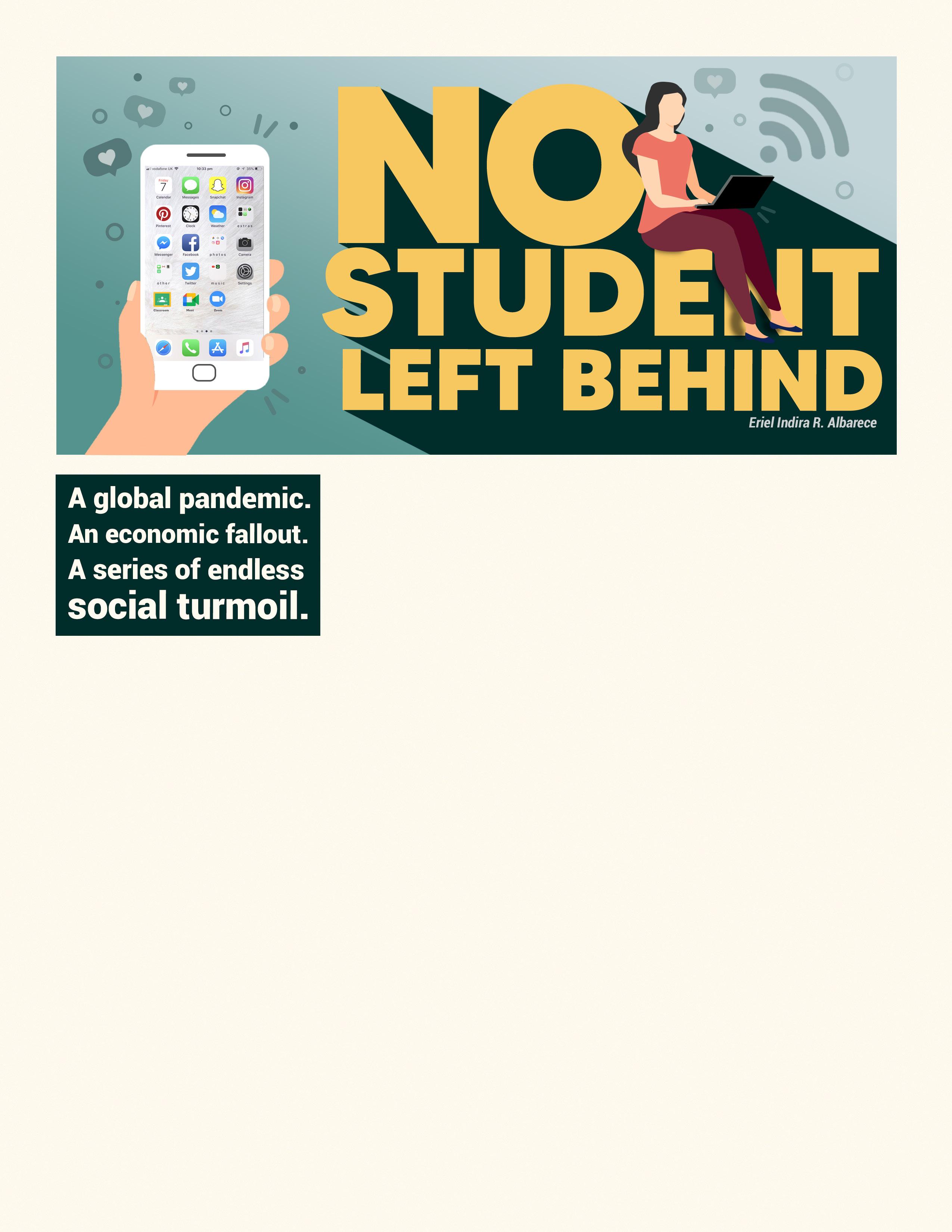
the middle and higher classes. Even though they are struggling and have seen how education has lost its quality and efficiency because of the pandemic’s stain, how much more to those situated in remote areas? As mentioned, they have been struggling even before this pandemic started, would everything be harder at the present times then, where nobody is exempt from the decline of everything in the face of these inevitable adversities?
Education will always be a powerful tool which everybody needs to maneuver life. Its purpose has been to give everyone guidance and wisdom; to help young children develop exponentially and become functional members of society, as well as for the older people to continuously learn how to handle life as everything advances along the way. It is the purpose of education to this day, whether education goes on in one of the most prestigious schools in the country, in a one-room school in the mountains, or as per today’s global state, in the comfort of one’s own home.
Pushing the pursuit of education in the midst of a pandemic has been a brave and competent choice made by the government, and inclusivity of education must be fulfilled. Indeed, students living in hinterlands deserve more recognition and help. They live in the most far-flung areas, but they also matter — they also deserve to be seen, heard, and be found. Education is a basic human right; it must never be selective and must not only favor those who are privileged. There shall be no student left behind, most especially those that live in the hinterlands.
15 The Official Student
–
Publication of University of Science and Technology of Southern Philippines
CdO Campus
Layout by Djan Kyle M. Muyco & Mark Jerome A. Orejenes
How far must we berate oneself for the mistakes we make? How long for these internal battles to end, before one chooses to let go? The year 2020 was met with vigor and enthusiasm, as though the world only knew of fairness and sympathy. However, the consequences of human greed have taken its toll on many parts of the world. Reckless terrorism, environmental degradation, and imprudent accidents — time urges us to count the graveyard crosses. Upon the massive onslaught of the COVID-19 pandemic, every problem has seemingly become more difficult to overcome for everyone. No matter what kind of person you are, the challenges we face on a daily basis cause significant impacts on the mind. As a result, the steps taken to care for ourselves turn into a vile predicament instead.
The Philippines’ Psychological Condition

Even before the looming of the COVID-19 pandemic, the World Health Organization (WHO) reported in 2010 that the Philippines has been recorded to have one of the highest rates of depression in Southeast Asia. With more than three million Filipinos affected, it can be deduced that the state of affairs on mental health conditions are quite alarming in the country (Malindog-Uy, 2020). In spite of these sensible facts, the real magnitude of the mental health dilemma continues to be an understatement in the country. Needless to say, nearly all efforts have been directed towards diminishing the socio-economic impacts of the pandemic while mental health needs are faintly given any attention. The mental aspect of our body should be held in high regard as its effects are more than meets the eye, inducing far more substantial and long-term consequences. With regard to this matter, it is quite intriguing to have a glance at the mental health of Filipinos who are vulnerable to distress.
Mental Health is Prevalent, Not a Trend
The human mind continues to relay a mysterious realm over the passing of time. People constantly witness a diversified series of experiences in our daily lives which pushes the brain to process signals at a simultaneous rate (Chater, 2018). Incidentally, potential stress and anxiety can develop
technical impairments on the brain. On this note, a research article published online by Plos One (July, 2020) mentions that one of the most vulnerable sectors on mental health regression are college students. These young people stand next in line as they carry the most substantial of crucial expectations — to heed the call of serving the nation.
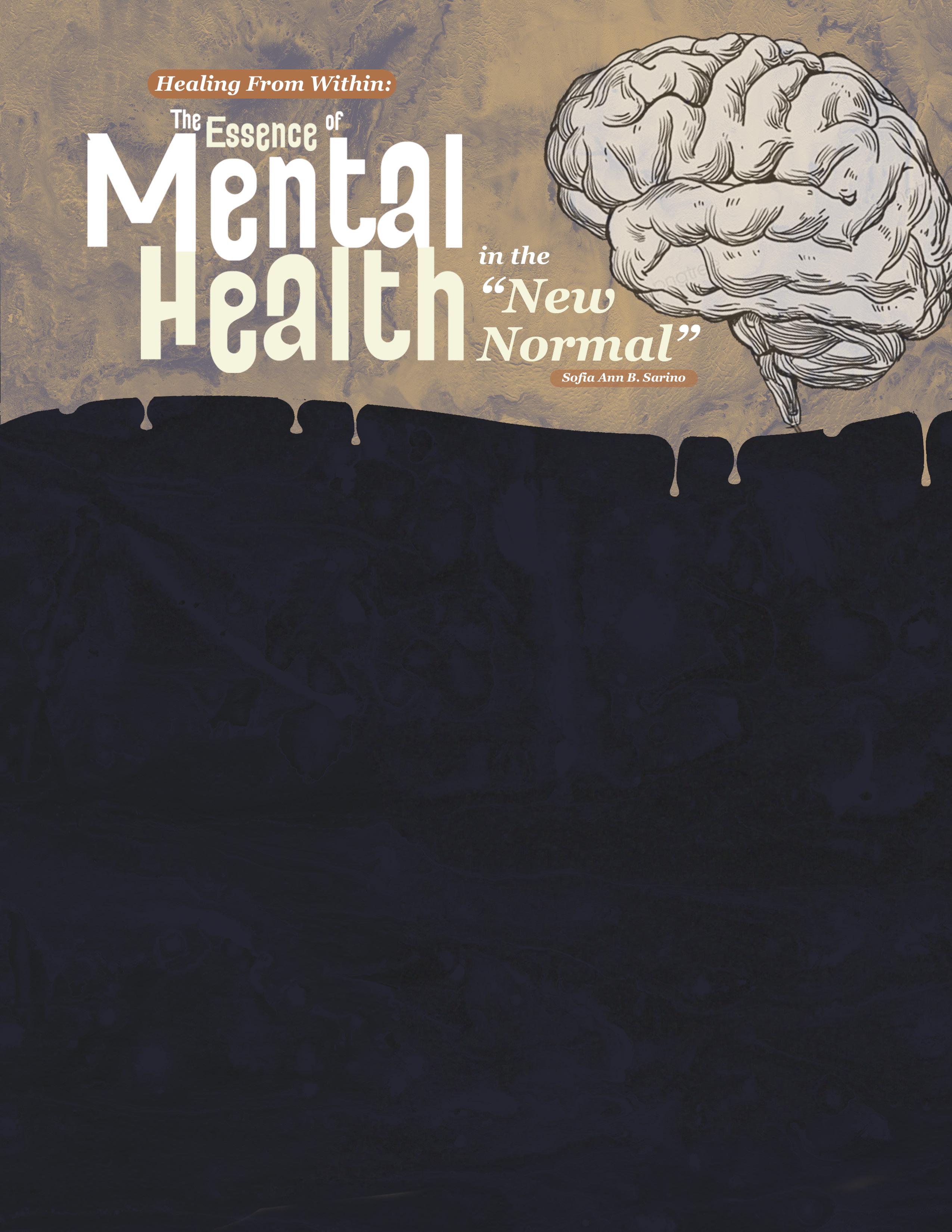
The intrinsic nature of education is somehow challenged as students, instructors, and involved sectors continue to adapt in the flexible mode of learning. As scholarly institutions pursue its conveyance of necessary adjustments, a rising wave of concerns also manifest. In an interview with the Head of Office of Student Affairs (OSA) Guidance Services Unit, Mrs. Mercylyn Tanog stated that “The common troubles of students pertain to familial issues, fear of uncertainties, financial issues relating to a lack of gadgetsandreliableinternetconnection.”All of which complicate their endeavours to perform academic tasks. As students face a growing pile of assigned outputs, the definition of meaningful learning is also called into question. The administration was also prone to receiving an outpour of criticism during the onset of the academic year. Consequently, the time for self-care has been cut short and the need for time-management is further emphasized. During this drastic change of pace, misperceptions have been normalized while feelings of self-worth are prospectively lost.
The Dangers of your Mind
While the sensations of distress begin to influence an individual’s way of living, intoxicating habits and desires are highly plausible to make an impression. One may resort to guilty pleasures such as stress-eating, oversleeping, and indulging into excessive gaming. The aforementioned unhealthy coping mechanisms are common to occur, especially when the individual seeks comfort to numb the feelings of pain and emptiness (Hariri-Kia, 2018). Additionally, people overridden with worries are vulnerable to withdrawal; turning away from past hobbies, interests, and even relationships. As feelings of chronic stress continue to worsen, the concept of having the right to worry are doubted. A person would then begin to search for validation through desperate
means. When this set of concerns are left unattended, the worst of most feared conditions may occur—that is the inception of self-harm.
Mental Health is Conserved Wealth
With or without the onset of the COVID-19 pandemic, caring for one’s mental health is of utmost importance. It is quite commendable that the USTP institution was able to facilitate the necessary mental health services to its constituents, conducting webinars and a dose of communication with students. According to Mrs. Tanog, “Everything starts with the self.” The most relevant action to take is to recognize one’s emotional state, a crucial step to effectively manage stress. It is also ideal to consult with trusted friends, loved ones, or even a counsellor. Following the identification of your stress is to start creating boundaries and getting familiar with your personal limits. Important as it is, an individual must be gentle and kind to one self, taking necessary breaks when truly needed.
The responsibilities placed upon us before the moment of birth are indeed, inescapable. We tend to forget the very essence of existence; giving little regard on the need to care for our emotions, our stability, and our very own minds. In these trying times, most of us are fastened within the confines of our homes. The familiar turns into the unfamiliar as extended sources of emotional support are not always within reach. We are trapped in a never-ending cycle of worry and doubt, all the while facing a multitude of accountabilities. However, it is essential to realize that at the end of the day, challenges are inevitable parts of life. And as human beings, it is our innate responsibility to overcome them, no matter how slow it will have to take. Now, it is time to begin with yourself; for you are not, and will never be alone.
Sources: https://www.ncbi.nlm.nih.gov/pmc/articles/PMC7444468/ https://academic.oup.com/qjmed/article/113/8/531/5860841 https://www.google.com/amp/s/www.psychologytoday.com/us/blog/ use-your-mind-change-your-brain/201106/you-are-not-yourbrain%3famp

FEATURE 16
Layout by Gerson John P. Salvacion
The Local Government Unit (LGU) of Cagayan de Oro City has finally launched its Higala App, a digitized contact tracing system for the Corona Virus disease (COVID-19) on Monday, November 9, 2020.

It is the hope of the city government to easily check and track the places that an infected individual visited, shopped, and dined in to trace possible close contacts. Also, the tracker was made to minimize physical contact by replacing the pen and paper method of filling out the health declaration form found in every establishment.
The LGU encourages the Cagay-anons to sign in the Higala app, a Quick Response (QR)-based information database system. Despite that, there was no ordinance mandating compliance.
The Acting City Administrator, Teodoro A. Sabuga-a Jr. said that the participation ought to begin with barangay authorities, who were told by the local government to spread information in relation to web-based contact tracing system and to lead in

registering their constituents on Higala App.
He further stated that an ordinance is set to craft, institutionalize the use of Higala App on all public and commercial transactions within the urban by City Council’s Committee on Health, led by City Councilor, Dr. Maria Lourdes S. Gaane.
The Higala App can be accessed through Google, Safari, Opera, and Firefox. Once the application is opened, one will be supplying personal information such as name, middle initial, and your surname. Then, the app will generate personal QR code.
An individual can either print or download a copy of the QR code in his phone, which is needed to be shown and scanned by an establishment before going inside. After that, the staff will fill out the health declaration form in behalf of the entrant.
However, one may also scan the QR code of the establishment and answer the health declaration form. The said form will be shown to the staff and then the entrant is good to go. On
the other hand, inbound passengers in airports and seaports who wish to visit the city should undergo and comply the same process.
Sabuga-a has also mentioned that the LGU has prepared a help desks at the City Hall to support those residents who do not have smartphones or computers to register and have their QR code printed.
“The establishments should at least have smartphones to scan the QRcodessothattheclientswouldonly bring out their QR codes – printed or storedintheirphones,”Sabuga-a added.
He also guaranteed the security of data entered in getting the QR codes, saying that only the City Health Office’s Health Emergency Administration Staff (CHO-Hems) can or have access.
Lastly, he advised the public to read the Data Privacy Notice first before logging in for online registration through higala.cagayandeoro.gov.ph.
Sources: https://bit.ly/35I7jFE https://bit.ly/3kFppw7
SCITECH 17
The Official Student Publication of University of Science and Technology of Southern Philippines – CdO Campus
Layout by Llane Graceza B. Benting & Mark Jerome A. Orejenes
From younger generations to the older ones, Filipinos are known to be the best supporters in the world. In fact, they are avid fans of basketball tournaments. That being said, the ball game turns to be their every night accompaniment, giving them the best basketball entertainment. Filipinos are also enthusiasts of the said game, which drive them to become one of the Filipinos’ basketball greats. Viewing live at arenas or even from TVs, one can perceive how Filipinos uphold their country ball club. As the Philippine Basketball Association (PBA) celebrates its 45th establishing commemoration, Filipinos are anticipating more thrill and excitement to the national league.
TIP-OFF
As PBA started its 45th season, a new chapter of Philippine Basketball is opened for some new opportunities. With this season, the first game was between the San Miguel Beermen (SMB) and the Magnolia Pambansang Manok where SMB triumphed with the score of 94-78. Unfortunately, last March 11, 2020, the season was suspended due to the COVID-19 outbreak and implementation of Enhance Community Quarantine (ECQ) in Luzon. All games were suspended including D-League and basketball activities as it were prohibited by the InterAgency Task Force (IATF). Willie Marcial, the PBA’s Commissioner said that there is no timeline for PBA’s return. As games and practices are cancelled, the impact on the league is huge. “We’rethinkingofeveryone’s well-being. We’re not looking at what we’re going to lose”, Marcial said. Commissioner Marcial and the Board of Governors waited until August to observed developments for return.
THE RESTART
Though still waiting for IATF approval, the Board of Governors scheduled to restart the PBA last October 9, 2020, at Angeles University Foundation. PBA players were locked up in Clark, Pampanga City and inspired from NBA’s Bubble in Orlando. Moreover, frequent testing and sanitation are done to ensure the safety of everyone. Following IATF approval, the first PBA game resumed on October 11, 2020 since the suspension of games last March. The said game started between TNT Tropang Giga against Alaska Aces,
. .followed by the Barangay Ginebra San Miguel versus NLEX Road Warriors. Consequently, the PBA games continued and ready to battle for the Philippine Cup trophy.
SEIZING UP
Despite PBA’s efforts, all games were indefinitely postponed again due to IATF technical working group recommendations. This means that the PBA games and practices are on hold until further notice. This happened due to the first COVID-19 positive case in the arena, a referee, and followed by a Blackwater elite player, as reported by CNN Philippines. That being said, IATF and the Department of Health (DOH) gave a new set of stricter protocols for the PBA activities. Fans became disappointed, but at the same time, hopeful for a second comeback.
FOLLOW UP
PBA is back again! Commissioner Willie Marcial announced that all games have begun once more last November 3, 2020. Also, a set of more enhanced guidelines were implemented. Blackwater elite player who tested positive needed to finish his 14-day quarantine.
“These additional protocols from IATF are put in place to ensure the integrity of the bubble,” Marcial said during the interview conducted by ESPN5. PBA fans are delighted for PBA’s second return. The reoccurrence of games was successful which leads to Ginebra’s first Philippine Cup title against TNT Tropang Giga last December 4, 2020. TNT missed their chances as their two stars Jason Castro and Rey Parks Jr. ruled out due to injuries. This allowed Ginebra to drive out TNT in game 5 of the PBA championship with the score, 82-78. Consequently, L.A. Tenorio, the PBA’s “Iron man,” crowned as the Most Valuable Player (MVP) and Ginebra earned their back to back trophy. PBA fans commended Commissioner Willie Marcial for a successful bounce back as well as the staffs and the people who made the 45th season successful in spite of fallout.

***

Despite the challenges brought by COVID-19, the game must keep on bouncing just like how Filipinos continue to cheer for their idols. That spirit of enthusiasm should remain to preserve the essence of basketball tournaments in the Philippines which is sportsmanship towards the group and with the rival team as well.
Sources:
https://news.abs-cbn.com/amp/sports/12/09/20/pba-ginebra-overcomes-undermanned-tnt-to-rulephilippine-cup
https://manilastandard.net/mobile/article/342000?fbclid=IwAR27QbJox4LVbT16PsBdUW5QzJ1m3DILO0 yUv-pLQcuBVmgODMnpIW7w4Uc
https://www.spin.ph/life/guide/everything-you-need-to-know-about-life-inside-the-pba-bubble-a101720201007-lfrm?fbclid=IwAR27QbJox4LVbT16PsBdUW5QzJ1m3DILO0yUv-pLQcuBVmgODMnpIW7w4Uc

18 SPORTS
Mikhail Christian B. Gallana
Layout by Mikhail Christian B. Gallana
OSSEI NATIONAL CONFERENCE ON CAMPUS JOURNALISM & 13TH WRITING COMPETITION
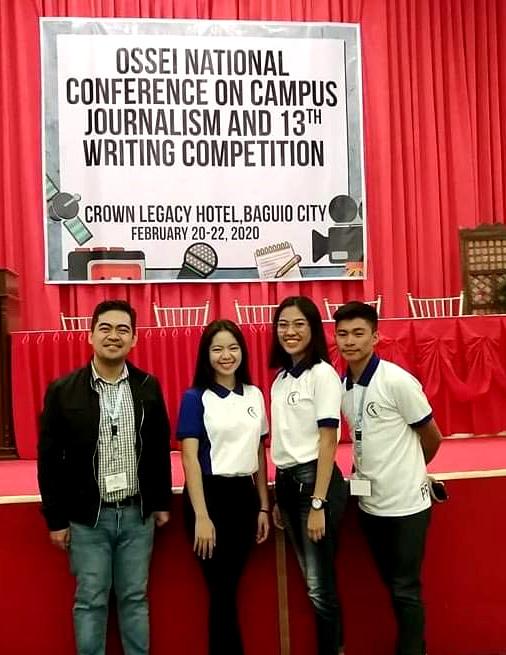
February20-22,2020

Crown Legacy Hotel, Baguio City
Participants: Dr. Ramir Philip Jones V. Sonsona, Pevi Mary Clare L. Larede, Jenny Babe M. Binalon, and Mark Jerome A. Orejenes
OSSEI NATIONAL CONFERENCE ON CAMPUS JOURNALISM & 14TH WRITING COMPETITION December12&19,2020

December17,2020viaZoom Participants: Dr. Philip Jones V. Sonsona, Ryan L. Ga-as, Sofia Ann B. Sarino, and Arnel James Y. Suprito VIRTUAL PANAGTAPOK 2020
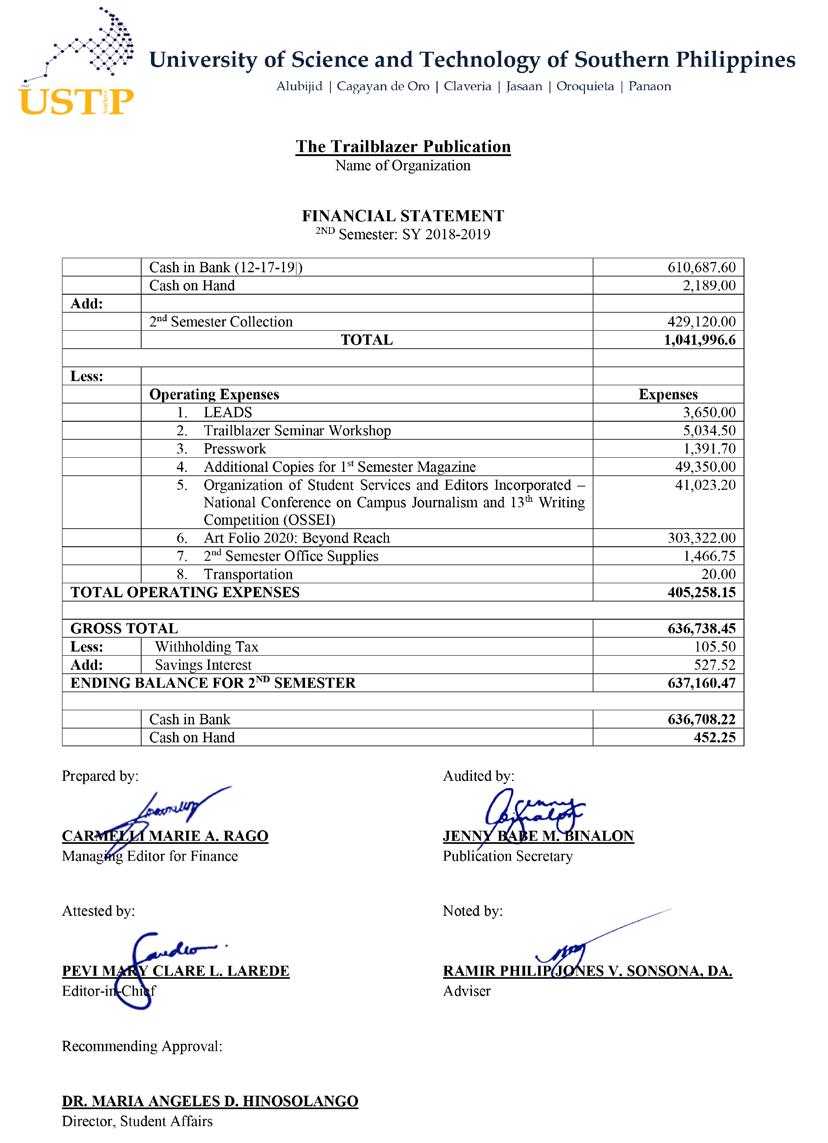
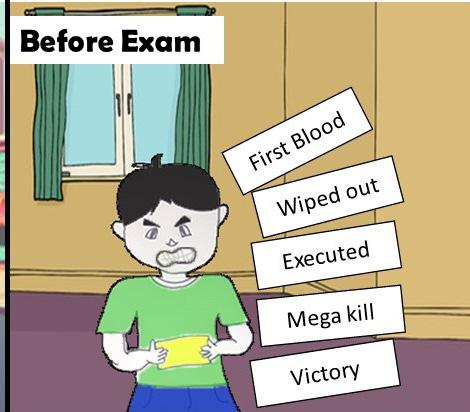
DISKURSO: A STUDENT ORGANIZATION MODERATORS’ ORIENTATION FORUM December19,2020viaZoom
Participants:
July27-29,2020viaZoom Participants: Maria Alexandrea Venilda P. Portillo and Sofia Ann B. Sarino LEARN. LEAD. SERVE.
SIBYA: The 9th Northern Mindanao Student Communicators Congress

March7,2020
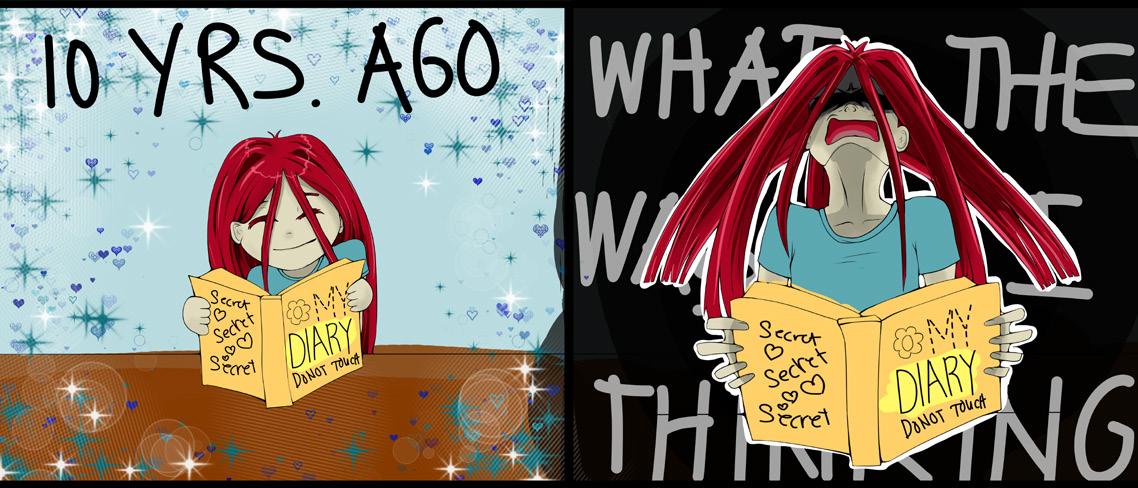

SM Cinema 1, Cagayan de Oro City
Participants: Carmelli Marie A. Rago, Ma. Alexandrea Venilda P. Portillo, Nicolas Cage De la Cruz, Mikhail Christian B. Gallana, Mark Jerome A. Orejenes, Arnel James Y. Suprito, Sofia Ann B. Sarino, Ryan Rashed O. Dongiapon, Kim Ruzzel T. Amper, Gerson John P. Salvacion, and Ryan L. Ga-as
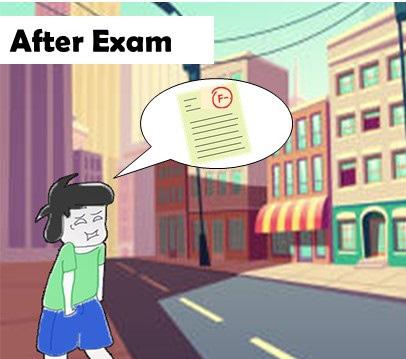
19 The Official
TRAIL IN MOTION
Student Publication of University of Science and Technology of Southern Philippines – CdO Campus
FINANCIAL REPORT TRIPPING dream by: Arakni ML.jpeg by: Liyan what the...was i thinking by: Arakni
Participants: Kim Ruzzel T. Amper, Brian Jay B. Vallejo, Mikhail Christian B. Gallana, Djan Kyle M. Muyco, Sofia Ann B. Sarino, and Arnel James Y. Suprito
Ryan L. Ga-as and John Angelo D. Gundran

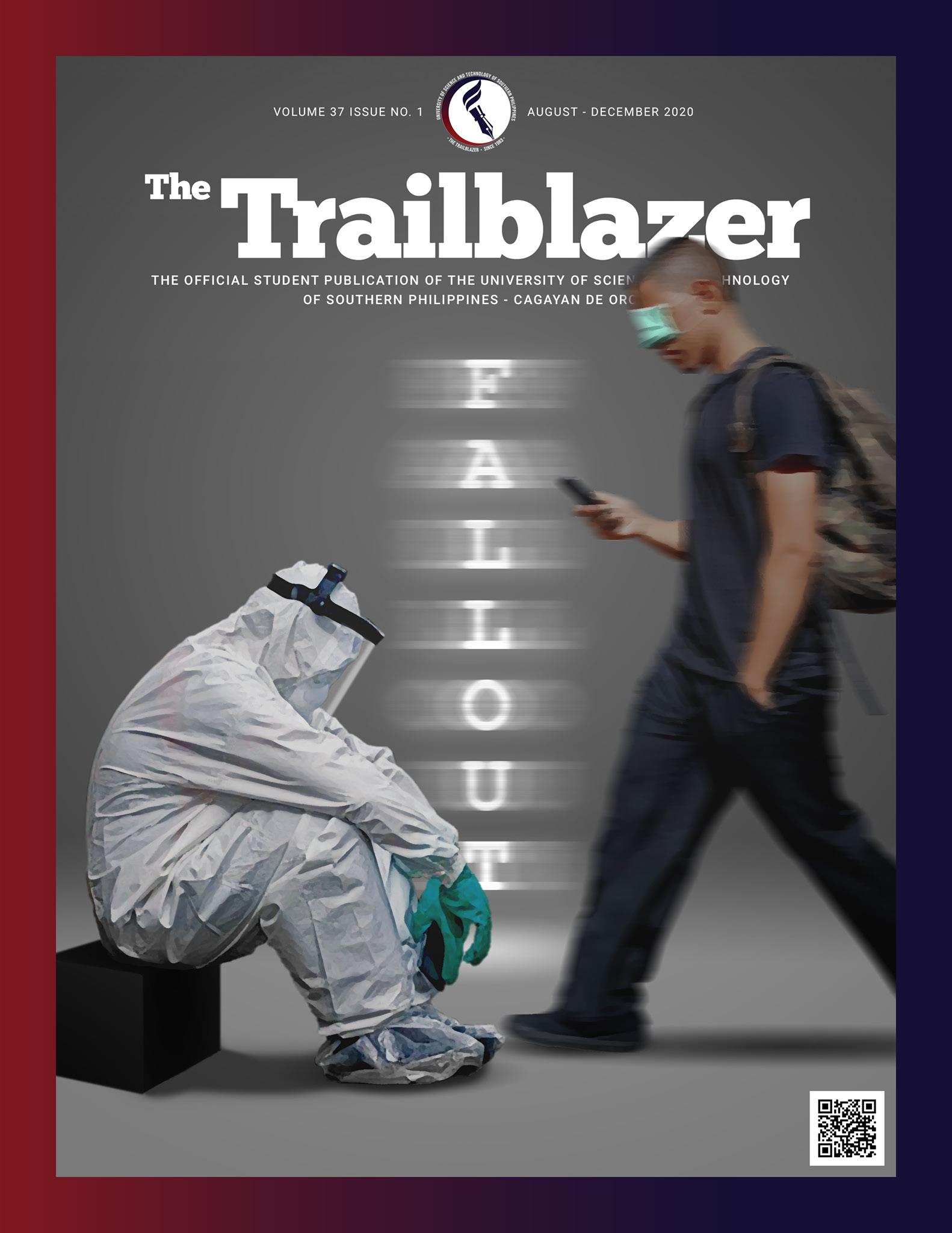

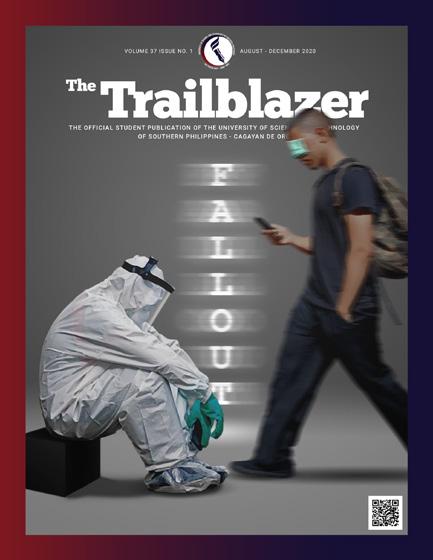


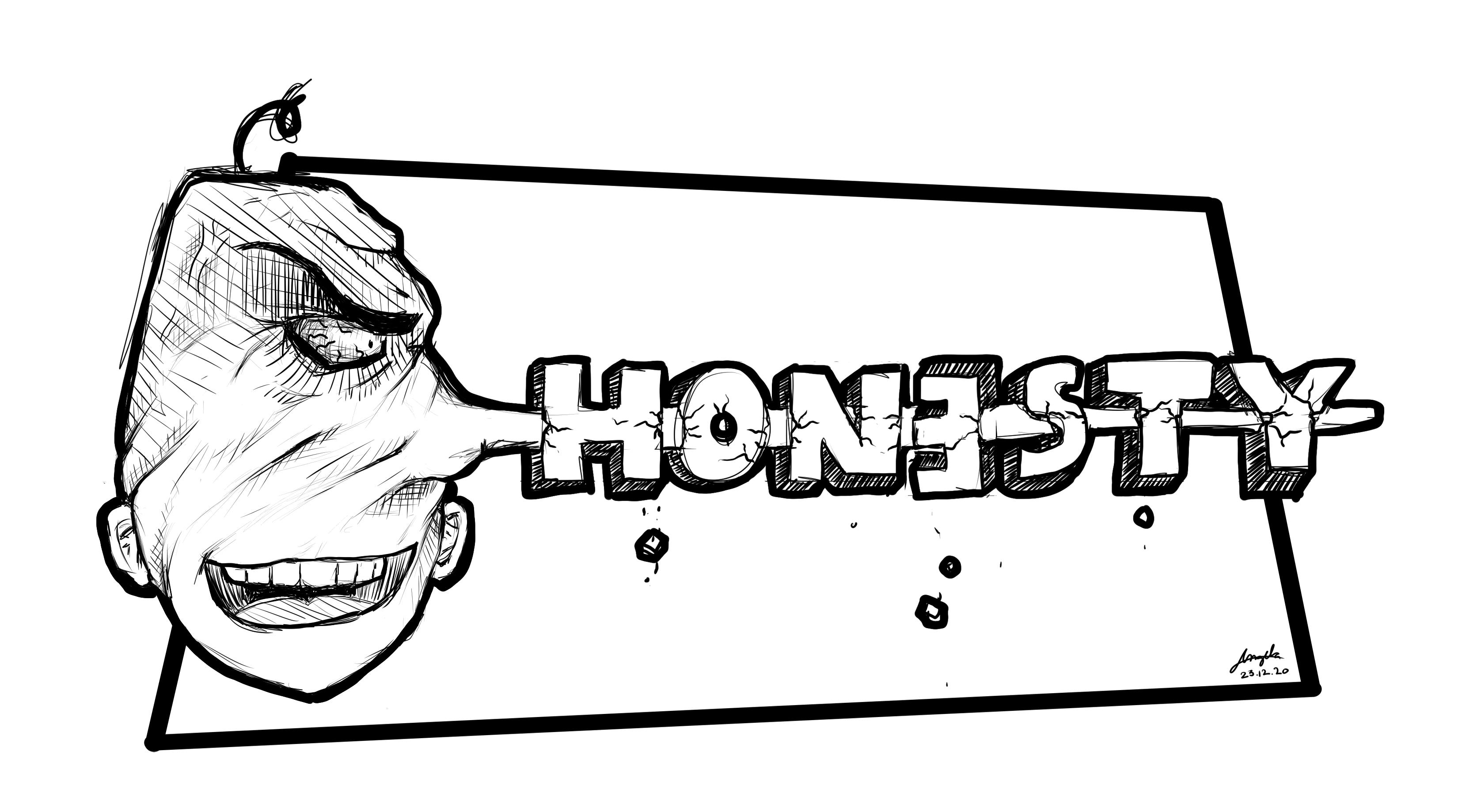

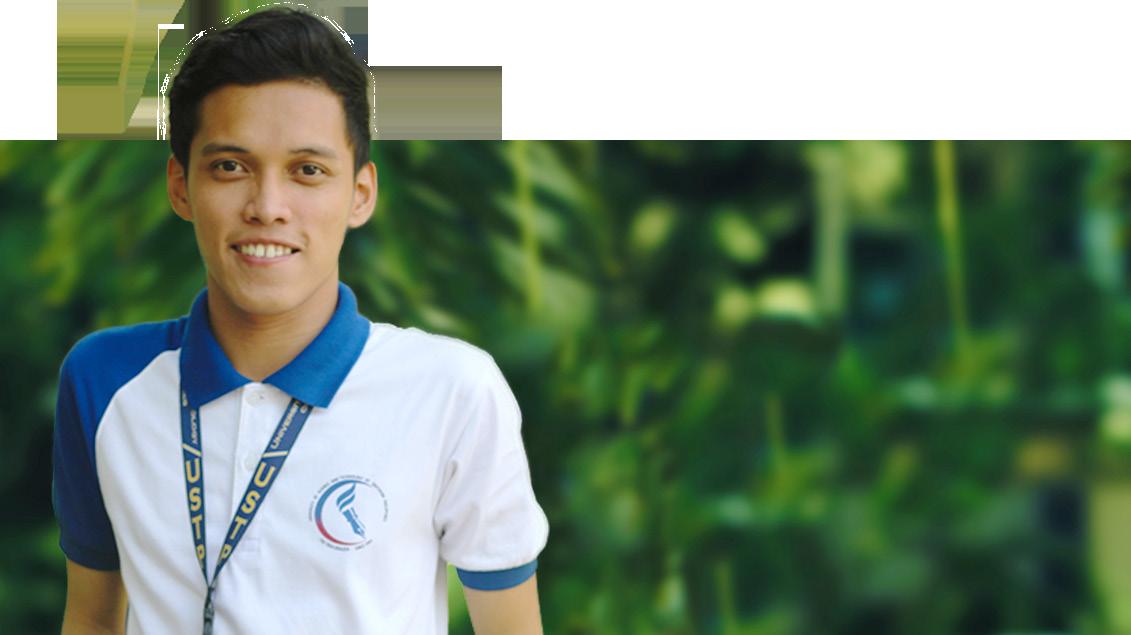
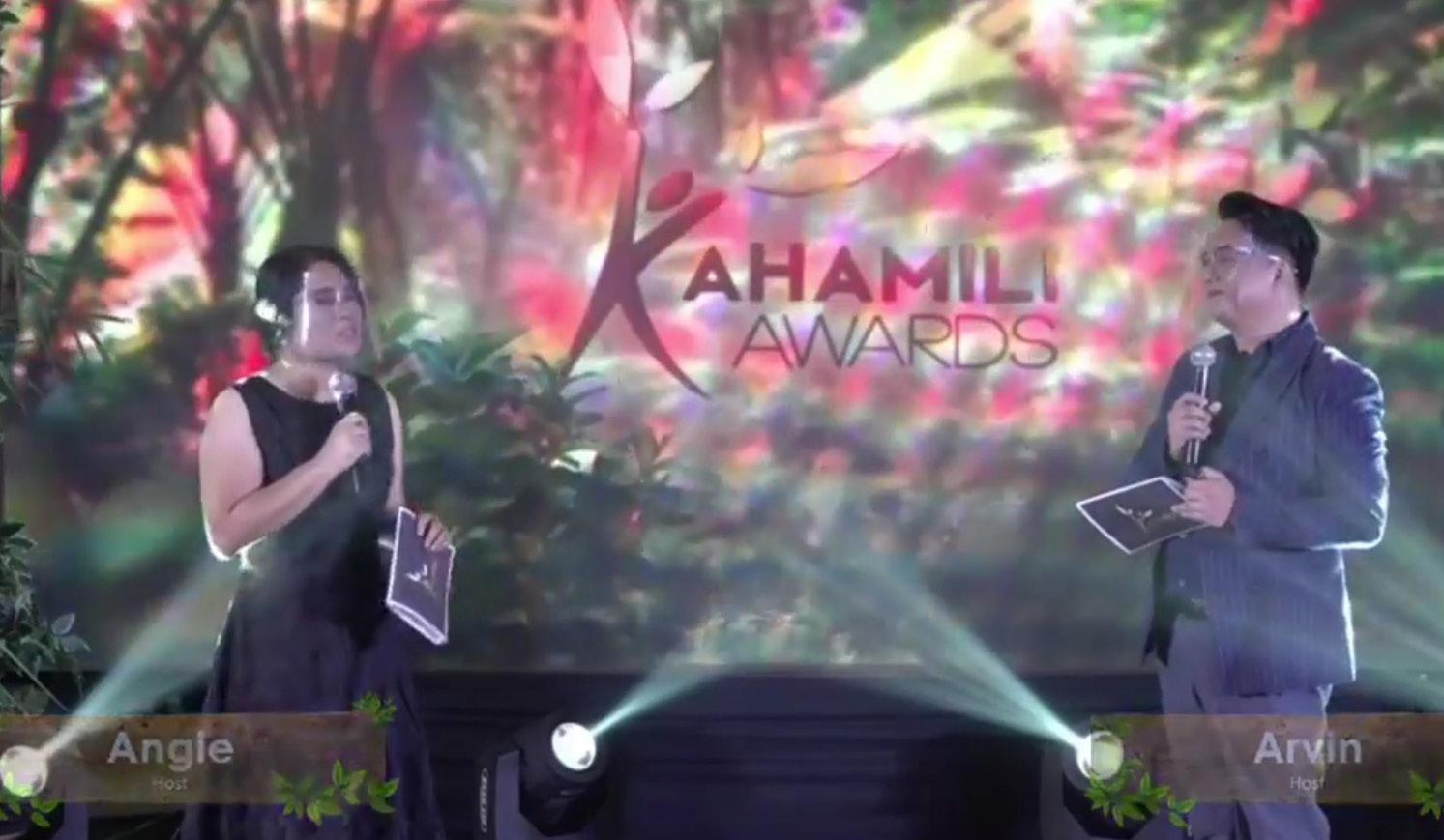

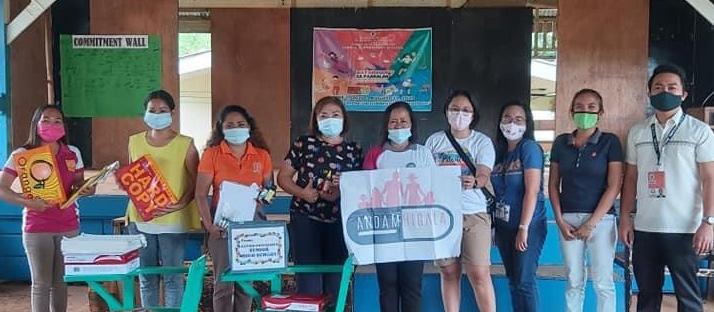
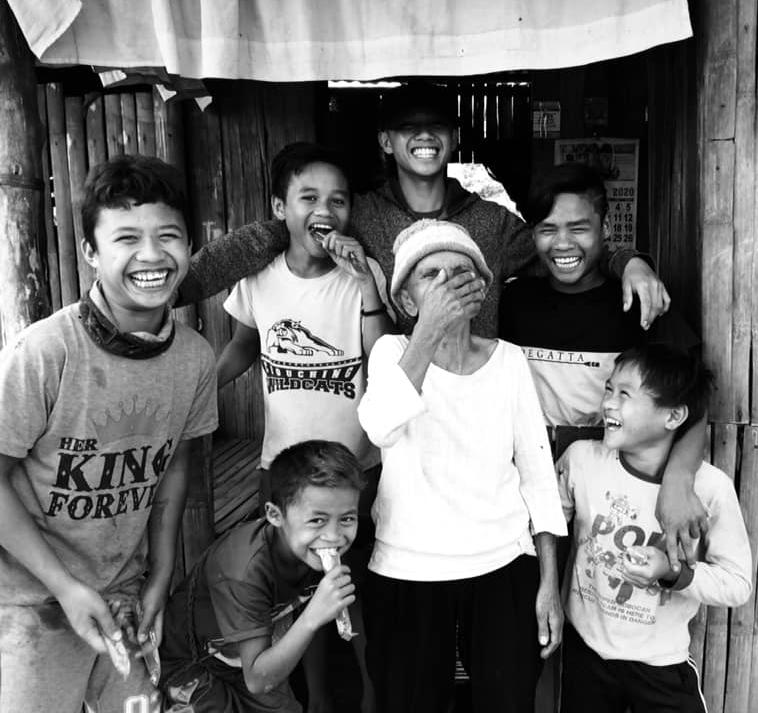
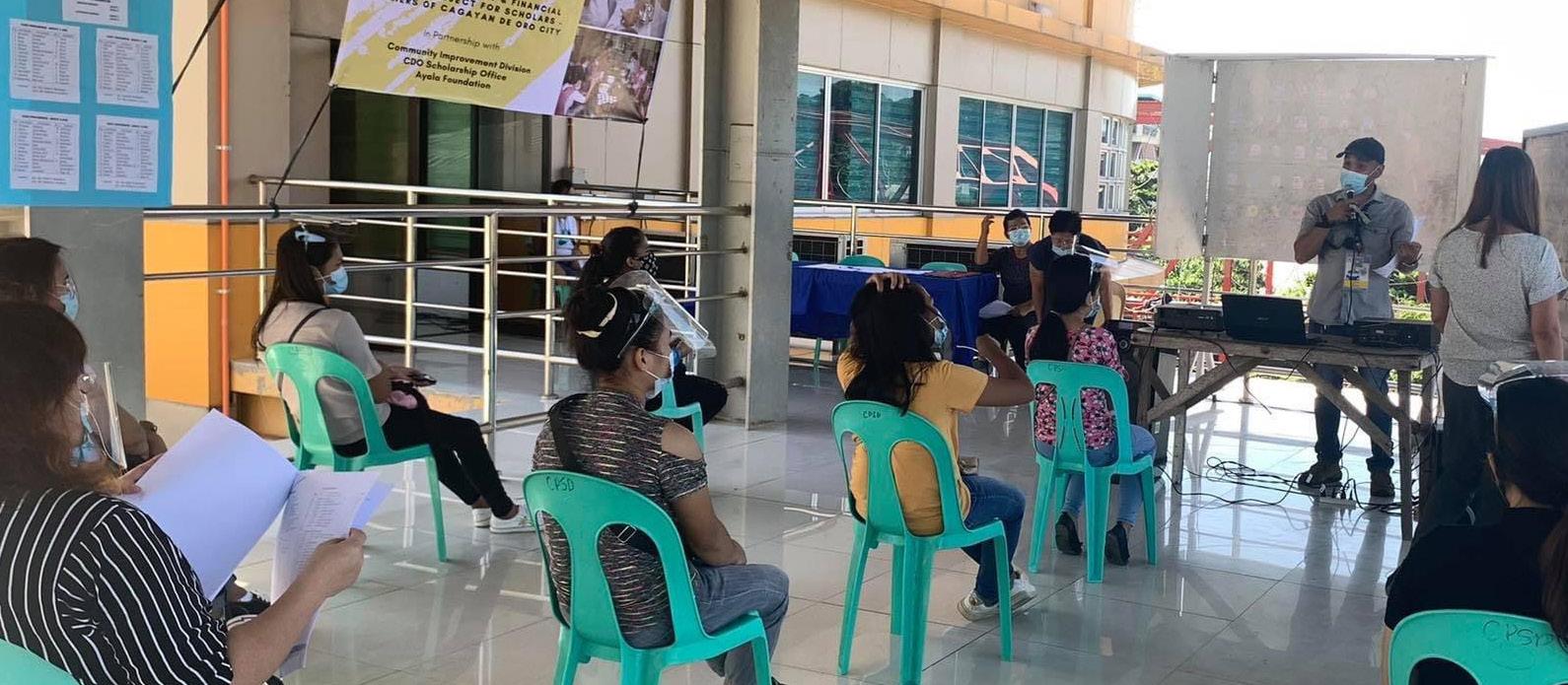 POSITIVITY AMIDST LIFE CHALLENGES. One of the winning shots by Art David Galvez a BS-TCM student of USTP-CDO. Photo source: Art David Galvez Facebook Account, 2020
POSITIVITY AMIDST LIFE CHALLENGES. One of the winning shots by Art David Galvez a BS-TCM student of USTP-CDO. Photo source: Art David Galvez Facebook Account, 2020
 Rissa S. Trazo
Rissa S. Trazo






















